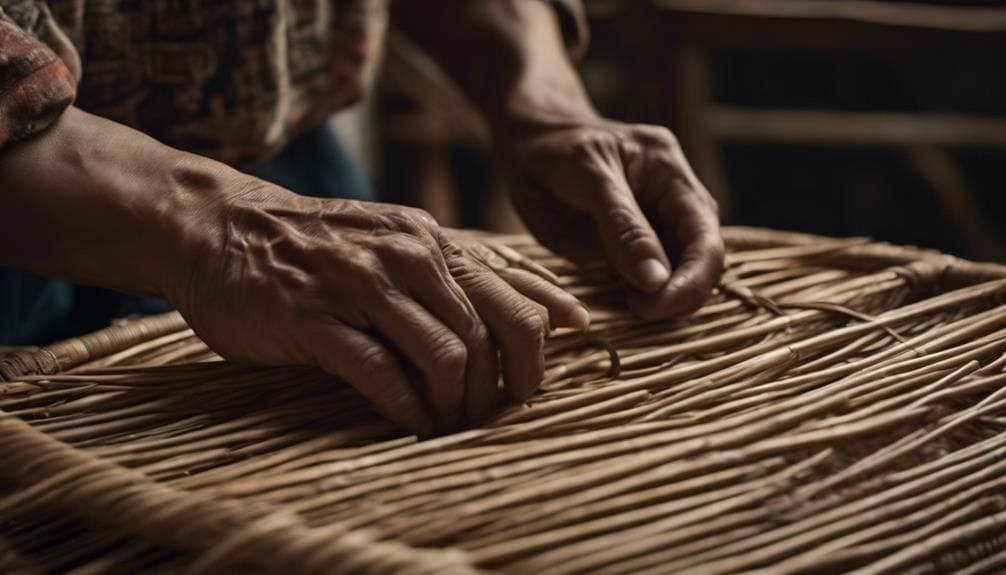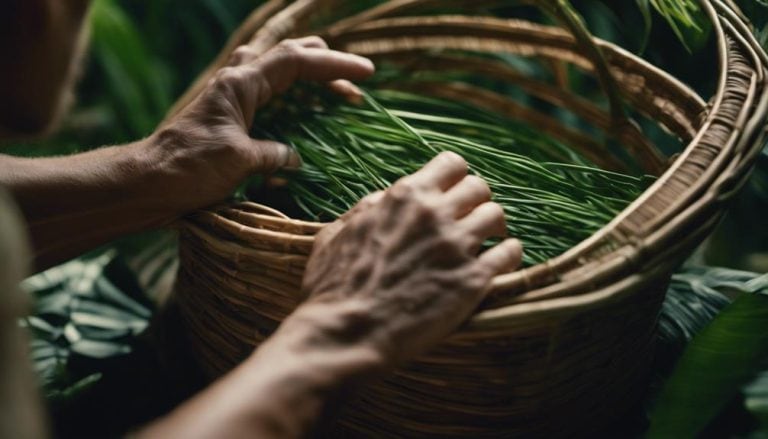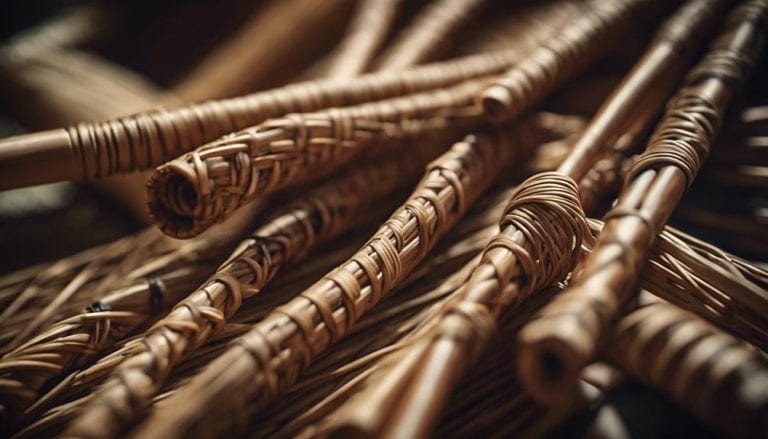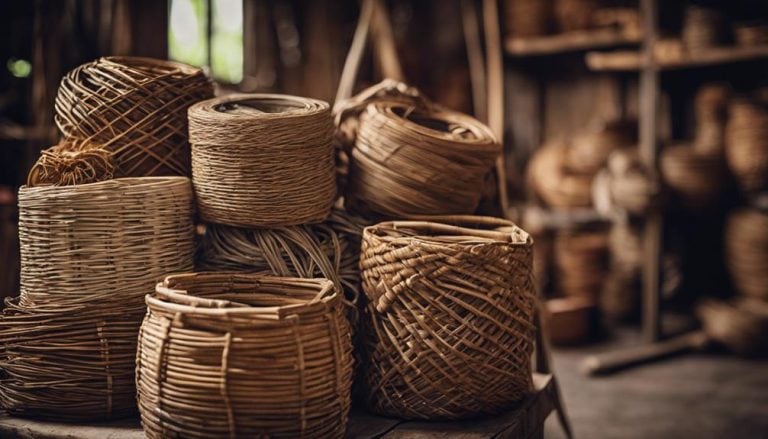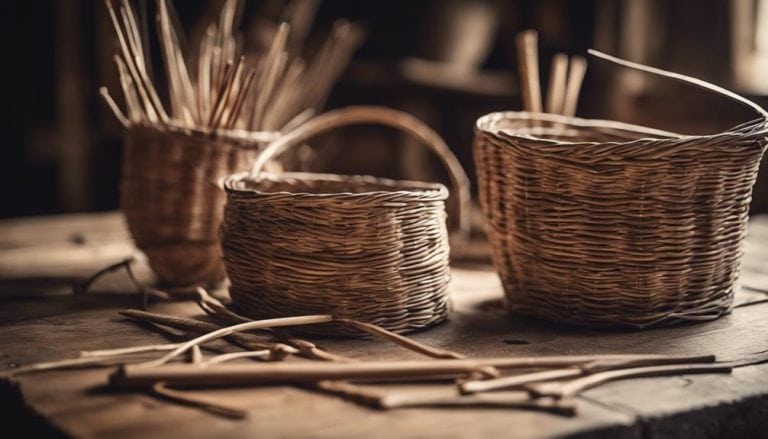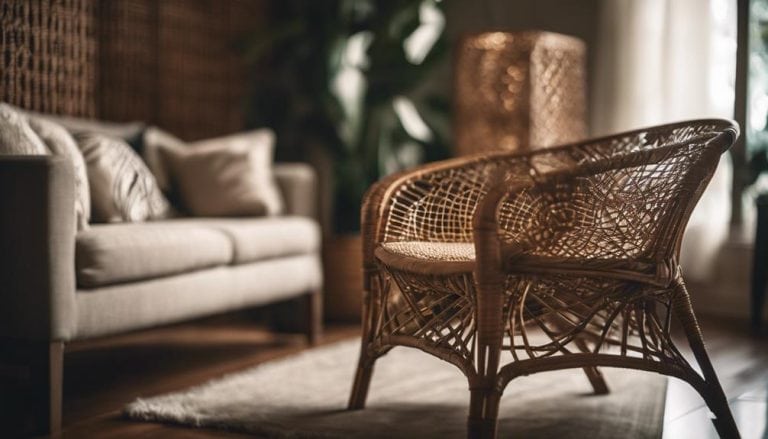Rattan Cane for Traditional Weaving Techniques
While some might argue that traditional crafts are becoming obsolete in our modern world, I’ve found that the use of rattan cane in weaving techniques is more relevant than ever. As a material, it’s sustainable and offers a unique blend of flexibility and strength that modern synthetics can’t quite match.
Through my exploration of various weaving patterns and the creation of items ranging from simple mats to complex furniture pieces, I’ve discovered a world where tradition and innovation intersect. I invite you to join me in uncovering the secrets behind mastering these age-old techniques, where each twist and turn of the cane holds the potential to transform the ordinary into the extraordinary.
Rattan cane is commonly used in traditional weaving techniques for its flexibility and durability, making it a popular choice among artisans. Its natural properties allow for intricate designs and sturdy craftsmanship in various woven products.
Key Takeaways
- Rattan cane excels in durability and flexibility, which is ideal for traditional weaving techniques.
- It embodies sustainability, making it a preferred choice for eco-conscious craftsmanship.
- The art of rattan weaving integrates cultural significance and meditative crafting processes.
- Maintenance practices ensure the longevity and preservation of rattan creations.
Understanding Rattan Cane
Delving into the world of traditional weaving, rattan cane emerges as a robust and eco-conscious material, esteemed for its versatility and sustainability across various cultures. Its journey from the tropical heartlands to our homes speaks volumes about its inherent benefits. As I explore, the sustainability of rattan cane stands out, primarily due to its rapid growth and ease of harvest. This climbing palm thrives in the understorey of tropical forests, contributing to the ecosystem without necessitating extensive agricultural interventions.
Given its biodegradable nature, rattan cane’s resilience and flexibility minimize waste and promote a circular economy. Equally captivating are the color variations of rattan cane, from light beige to honey brown, which naturally enhance the aesthetics of any piece it adorns.
These hues imbue furniture with a warm, inviting ambiance, effortlessly blending with diverse decor styles. Beyond its beauty, this color palette reflects the material’s organic essence, offering a tactile connection to nature. Rattan cane’s aesthetic versatility and environmental benefits underscore its enduring appeal in traditional and contemporary weaving practices.
Preparing Cane for Weaving
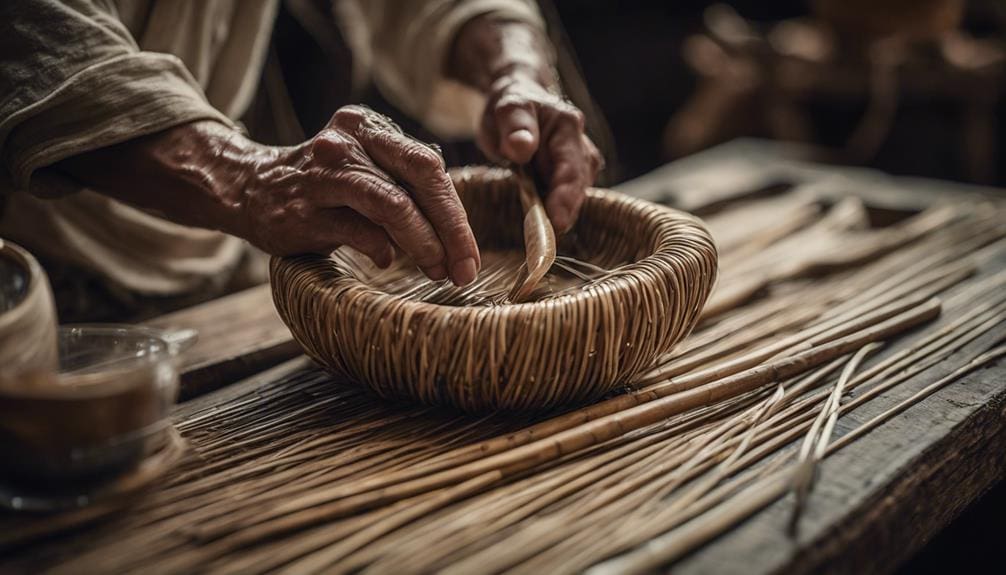
Before weaving can commence, it’s essential to properly prepare the rattan cane, ensuring it’s both flexible and durable for the intricate process ahead. This preparation is crucial for the success of the weaving techniques and for honoring the rich, cross-cultural traditions associated with rattan weaving.
Here’s how I ensure my cane is ready:
- Cutting the Cane: I cut the cane into lengths not exceeding 3 yards. This makes it manageable and preserves the integrity of the material during weaving.
- Soaking for Pliability: My next step is to soak the cane in cold water for about half an hour. This simple yet effective method enhances the rattan’s flexibility, making it easier to manipulate.
- Drying and Working the Cane: After wiping it, I work the cane between my fingers. This step ensures it becomes supple and ready for the weaving process.
- Maintaining Flexibility: I hang the cane on a hook and cover it with a damp cloth, keeping it flexible. I dampen it slightly with a wet cloth to prevent brittleness if it dries out while weaving.
Through this detailed preparation, I ensure my rattan cane is poised for weaving, embodying the blend of resilience and finesse essential for this ancient art.
Essential Weaving Tools
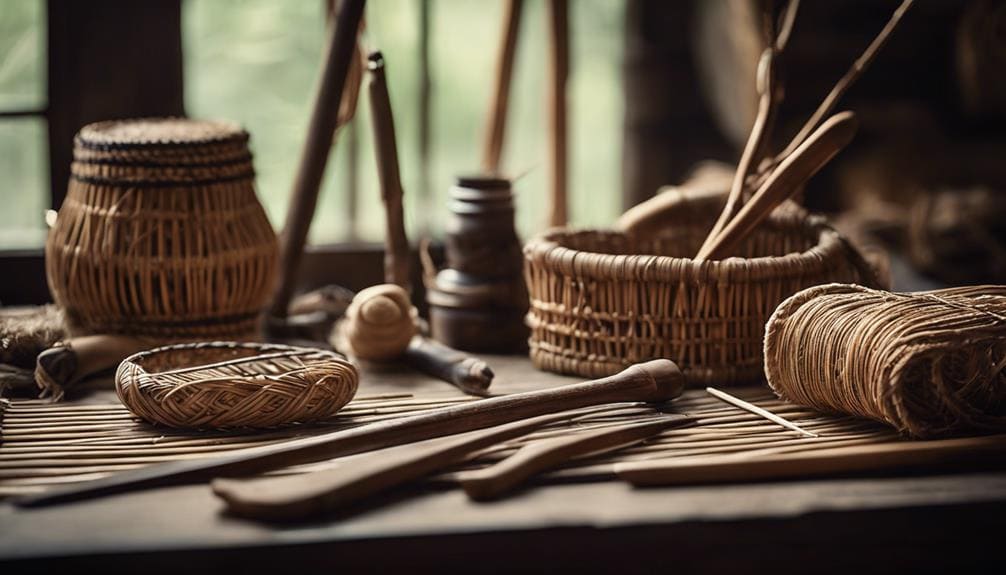
Having the right tools at hand is crucial for mastering the art of rattan cane weaving, a technique steeped in global tradition and requiring meticulous attention to detail. Through my weaving journey, I’ve discovered that understanding and utilizing specific tools enhances my craft and connects me to a broader community of weavers who share this passion.
| Tool | Use | Importance |
|---|---|---|
| Sharp Knife | Cutting cane | Precise cuts enhance the weave’s cleanliness, impacting the aesthetic and structural integrity. Sharpening techniques are vital here. |
| Peg | Securing cane | It is essential for starting a project to ensure the foundation is strong, setting the stage for a durable weave. |
| Round-nosed Pliers | Shaping/bending cane | Enable intricate designs, allowing for personal expression and cultural storytelling through patterns. |
| Awl | Creating holes | Essential for starting a project, it ensures the foundation is strong, setting the stage for a durable weave. |
As I delve into these tools and their applications, I’m reminded of the shared knowledge across cultures, emphasizing the importance of these techniques. The precision of sharpening techniques and the efficacy of pegging methods speak not just to the technicality of the craft but to its soul, bridging generations and geographies through the art of weaving.
Mastering Common Patterns
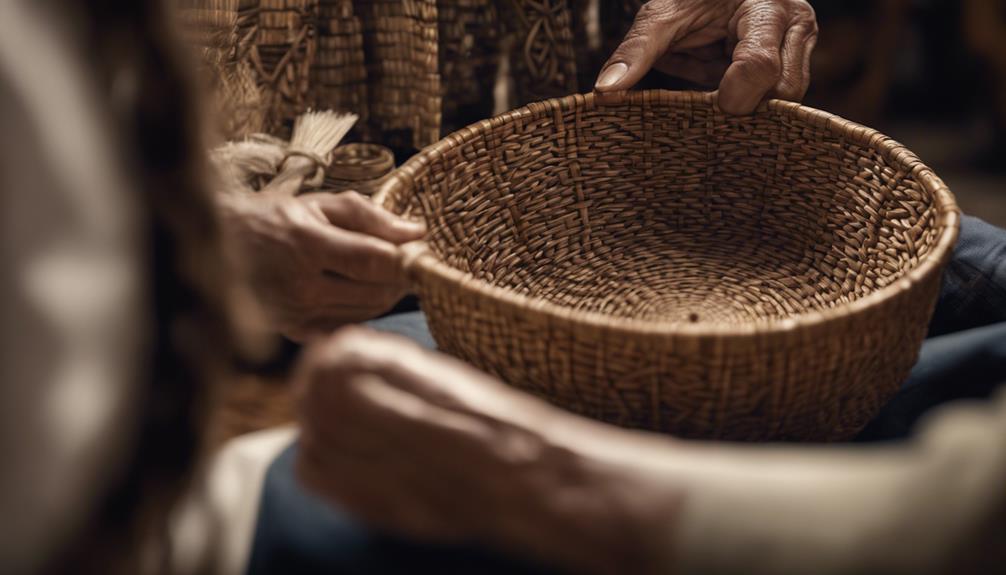
After exploring the essential tools for rattan cane weaving, it’s crucial to focus on mastering common patterns. These patterns serve as the foundation for creating intricate and culturally rich pieces. These basic patterns pave the way for advanced techniques and intricate designs, allowing creative variations and artistic expressions.
Here’s a breakdown of how I approach the learning process:
- Start Simple: I began with Randing and Pairing, the simplest patterns. This allowed me to understand the rhythm and tension needed in weaving without overwhelming myself.
- Practice Consistency: Consistency in tension and spacing is key. I dedicated time to practice, ensuring my cane was pegged firmly and not twisted, aiming for a neat finish.
- Build Gradually: Once comfortable, I moved to Slewing, Waling, and Braiding. Each pattern introduced new challenges and skills, building my confidence and capability to handle more complex designs.
- Experiment: With a solid foundation, I combine patterns, playing with creative variations to express my artistic vision.
This journey from basic to more advanced patterns has been deeply rewarding, blending tradition with personal creativity.
Crafting a Split Cane Stool
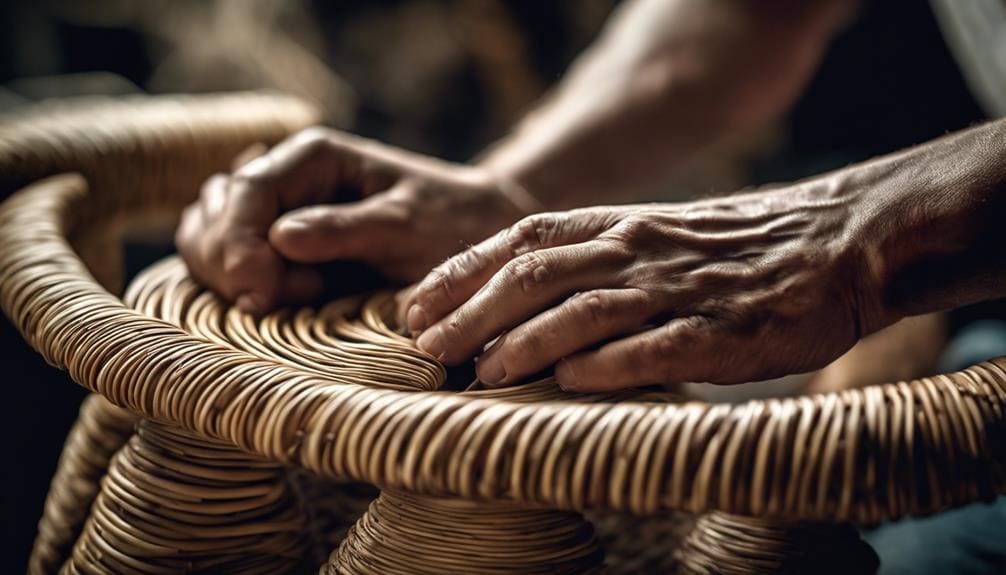
Embarking on crafting a split cane stool, I delve into a world where traditional craftsmanship meets practical functionality, offering a manageable yet intricate project for beginners and seasoned weavers alike. This endeavor isn’t just about stool making; it’s a journey into the heart of cane weaving, a practice steeped in history and rich with cultural significance across the globe.
A split cane stool typically marries a sturdy wooden frame with a delicately woven cane seat, showcasing the harmonious blend of strength and elegance. The weaving process is a meditative practice involving interlacing split cane strands in a precise pattern that demands patience and attention to detail. For someone like me, who’s always been fascinated by traditional crafts’ tactile and tangible aspects, the project’s simplicity is its greatest allure.
Crafting a split cane stool is an intimate introduction to using cane materials. It offers a hands-on experience that is both educational and deeply satisfying. It’s a testament to the enduring appeal of traditional craftsmanship, providing a practical seating option and a piece of cultural heritage that I can call my own.
Weaving Chair Seats and Backs
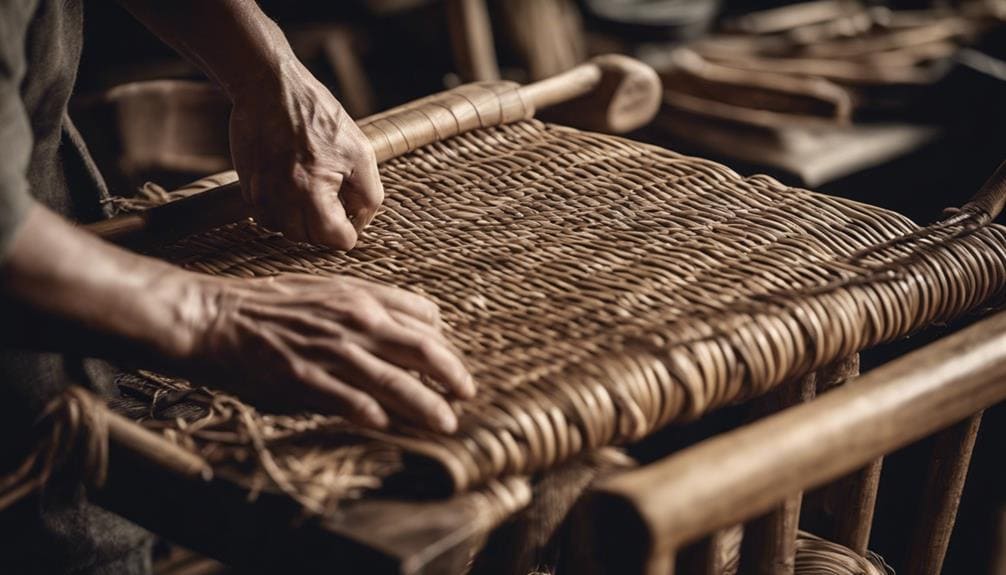
Diving into the art of weaving chair seats and backs, I’m immediately struck by the complexity and beauty that rattan cane brings to traditional craftsmanship. The process is not just about creating something to sit on; it’s about weaving stories and cultures into the very fabric of our homes.
Here’s why:
- Intricate Patterns: From the daisy to the spiderweb, the patterns achievable with rattan weaving are not just designs but a testament to the weaver’s skill and creativity. Each pattern holds its own in both aesthetic appeal and structural integrity.
- Rattan Durability: This material’s resilience makes it a preferred choice for furniture that’s both beautiful and built to last. Its flexibility allows for creative designs that stand the test of time.
- Weaving Techniques: Traditional methods like hand caning and using pre-woven cane panels offer a glimpse into the meticulous craft passed down through generations. These techniques balance the old with the new, integrating modern trends without losing the essence of tradition.
- Cross-Cultural Appeal: Rattan weaving isn’t confined to one region. Its versatility and durability have made it a beloved craft worldwide, offering many designs that cater to diverse tastes and spaces.
In crafting chair seats and backs, the marriage of rattan durability with creative designs and weaving techniques showcases a tradition that continues to evolve, adapting to modern trends while honoring its rich, cross-cultural heritage.
Caring for Rattan Creations
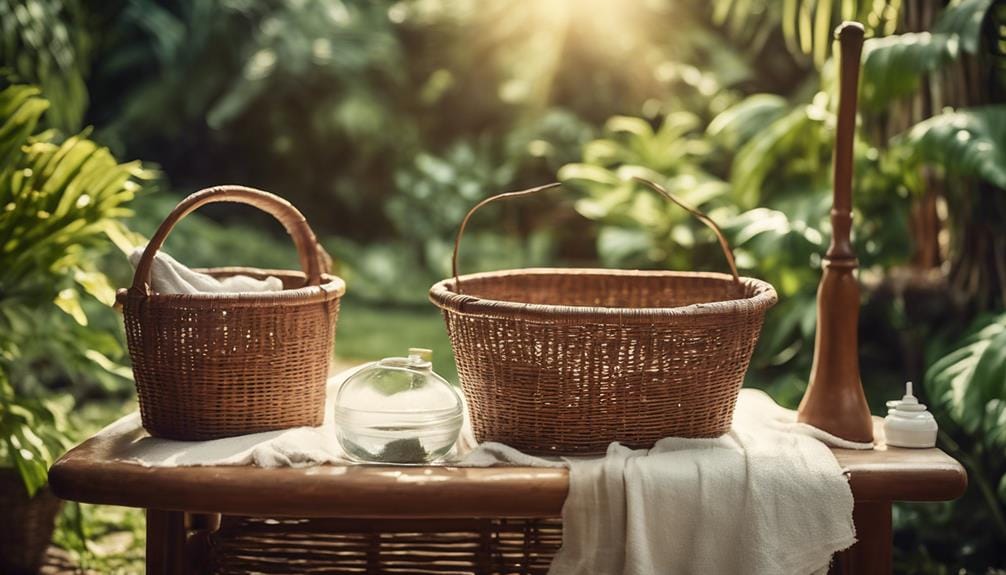
Maintaining the beauty and durability of rattan creations requires a deliberate approach to care, encompassing protection from elements and regular upkeep. It’s a practice steeped in tradition, yet vital for preserving these pieces across cultures. Rattan maintenance begins with safeguarding it from direct sunlight, as prolonged exposure can lead to fading and the material drying out. This preservation technique is crucial for maintaining rattan’s aesthetic and structural integrity.
Furthermore, gently dusting rattan pieces with a soft cloth or brush is part of its routine, ensuring the intricate weaves remain clean and vibrant. When it comes to deeper cleaning, I’ve found that a mild soap and water solution does wonders, though avoiding excessive moisture that could harm the rattan is essential. Another layer of protection involves applying a coat of clear lacquer or varnish, a method that seals the material from moisture, significantly extending its life.
Lastly, storing rattan items in a cool, dry place shields them from humidity and temperature fluctuations, further embodying the thoroughness required in rattan care and cleaning methods. These meticulous practices preserve the essence of rattan’s natural beauty and resilience for future generations to cherish.
Frequently Asked Questions
What Is Rattan Weaving?
I’ve learned that rattan weaving, with its sustainability and deep weaving origins in Southeast Asia, involves crafting durable items from rattan cane. It’s a skill that bridges cultures, emphasizing both artistry and environmental consciousness.
What Is Cane Weaving Called?
Cane weaving, known for its durability and decorative applications, transcends cultures, offering a connection through artistry. It’s a craft where the heart meets hands, creating patterns that narrate stories across generations and geographies.
What Are the Techniques of Rattan Art?
I’ve learned rattan art techniques, including rafting, Pairing, Slewing, and Waling. They demand meticulous precision, blending rattan preservation with color variation, creating cross-cultural masterpieces that foster a deep, intimate appreciation for this traditional craft.
What Is the Use of Cane in Weaving?
I’ve found that cane’s durability makes it essential in weaving, elevating furniture design with a blend of tradition and innovation. Its natural aesthetic crosses cultural boundaries, intimately connecting us with sustainable and artistic craftsmanship.
Conclusion
As I delve into the world of rattan cane weaving, it’s fascinating to note that, globally, the demand for eco-friendly furniture has surged by over 70% in the past five years, a testament to rattan’s growing popularity. This statistic highlights the material’s sustainability and its versatility across cultures. Whether crafting a split cane stool or weaving intricate chair seats, rattan weaving embodies a harmonious blend of tradition and innovation, enduring through time and across borders.

